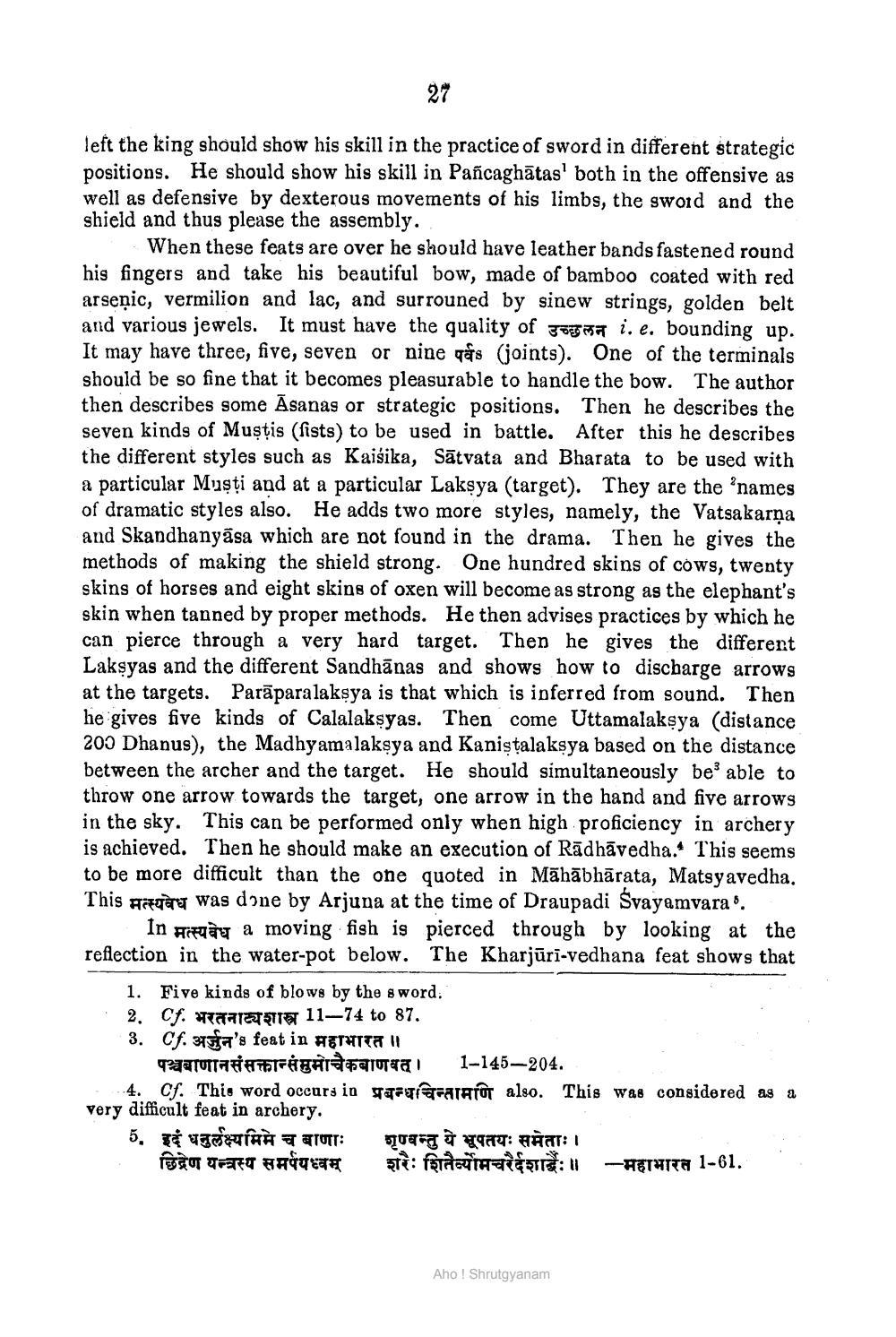________________
27
left the king should show his skill in the practice of sword in different strategic positions. He should show his skill in Pañcaghatas' both in the offensive as well as defensive by dexterous movements of his limbs, the sword and the shield and thus please the assembly.
When these feats are over he should have leather bands fastened round his fingers and take his beautiful bow, made of bamboo coated with red arsenic, vermilion and lac, and surrouned by sinew strings, golden belt and various jewels. It must have the quality of i. e. bounding up. It may have three, five, seven or nine qs (joints). One of the terminals should be so fine that it becomes pleasurable to handle the bow. The author then describes some Asanas or strategic positions. Then he describes the seven kinds of Mustis (fists) to be used in battle. After this he describes the different styles such as Kaisika, Satvata and Bharata to be used with a particular Musti and at a particular Lakṣya (target). They are the 'names of dramatic styles also. He adds two more styles, namely, the Vatsakarna and Skandhanyasa which are not found in the drama. Then he gives the methods of making the shield strong. One hundred skins of cows, twenty skins of horses and eight skins of oxen will become as strong as the elephant's skin when tanned by proper methods. He then advises practices by which he can pierce through a very hard target. Then he gives the different Laksyas and the different Sandhanas and shows how to discharge arrows at the targets. Parapara lakṣya is that which is inferred from sound. Then he gives five kinds of Calalakṣyas. Then come Uttamalakṣya (distance 200 Dhanus), the Madhyamalakṣya and Kaniṣṭalakṣya based on the distance between the archer and the target. He should simultaneously be able to throw one arrow towards the target, one arrow in the hand and five arrows in the sky. This can be performed only when high proficiency in archery is achieved. Then he should make an execution of Radhavedha. This seems to be more difficult than the one quoted in Mahabharata, Matsyavedha. This was done by Arjuna at the time of Draupadi Śvayamvara'. In a moving fish is pierced through by looking at the reflection in the water-pot below. The Kharjuri-vedhana feat shows that
1. Five kinds of blows by the sword. 2. Cf. 11-74 to 87. 3. Cf. अर्जुन 's fest in महाभारत ॥ पञ्चबाणान संसक्तान्संमुमोचैकबाणवत् । 4. Cf. This word occurs in very difficult feat in archery.
5. इदं धनुर्लक्ष्यमिमे च बाणाः छिद्रेण यन्त्रस्य समर्पयध्वम्
1-145-204.
art also. This was considered as a शृण्वन्तु ये भूपतयः समेताः । शरैः शितैर्व्योमचरैर्दशार्थैः ॥
- महाभारत 161.
Aho! Shrutgyanam




